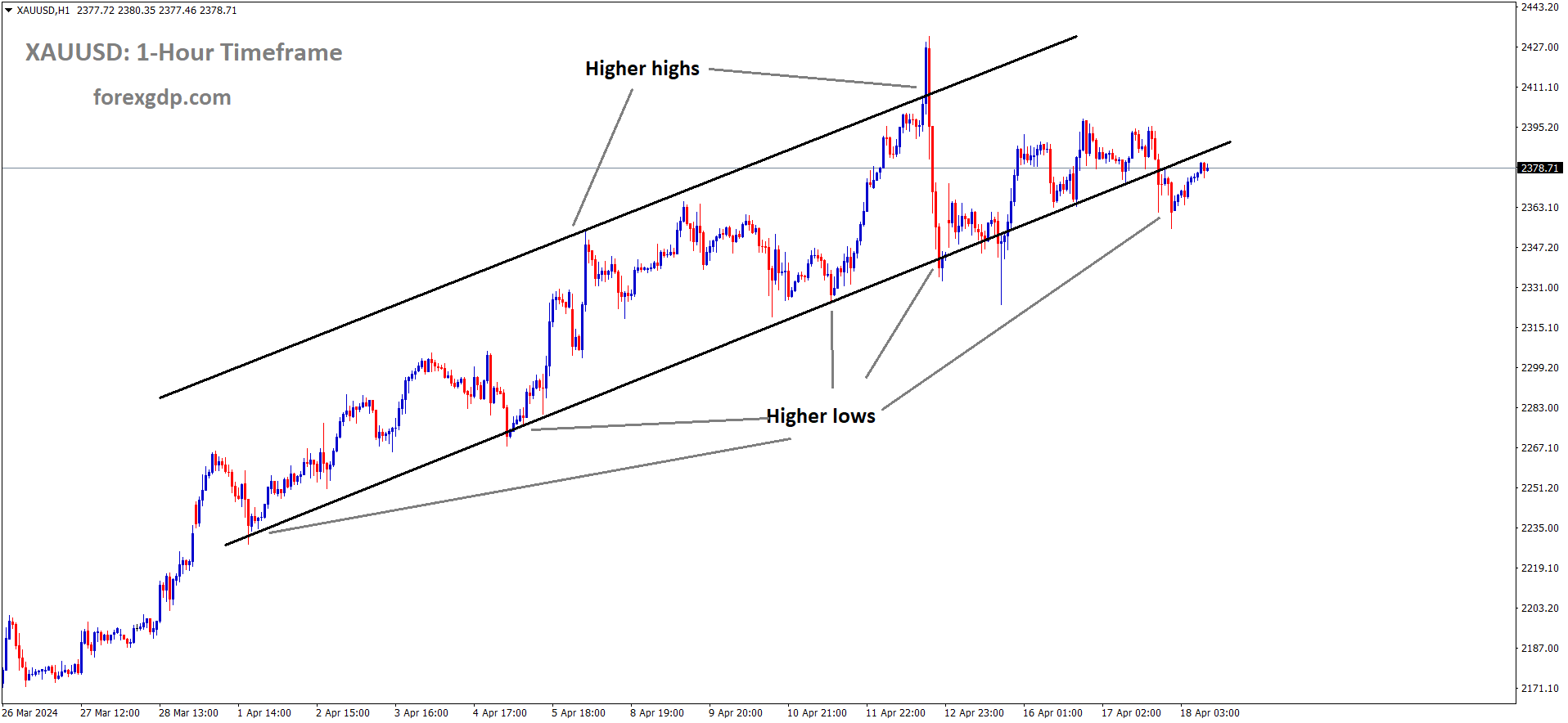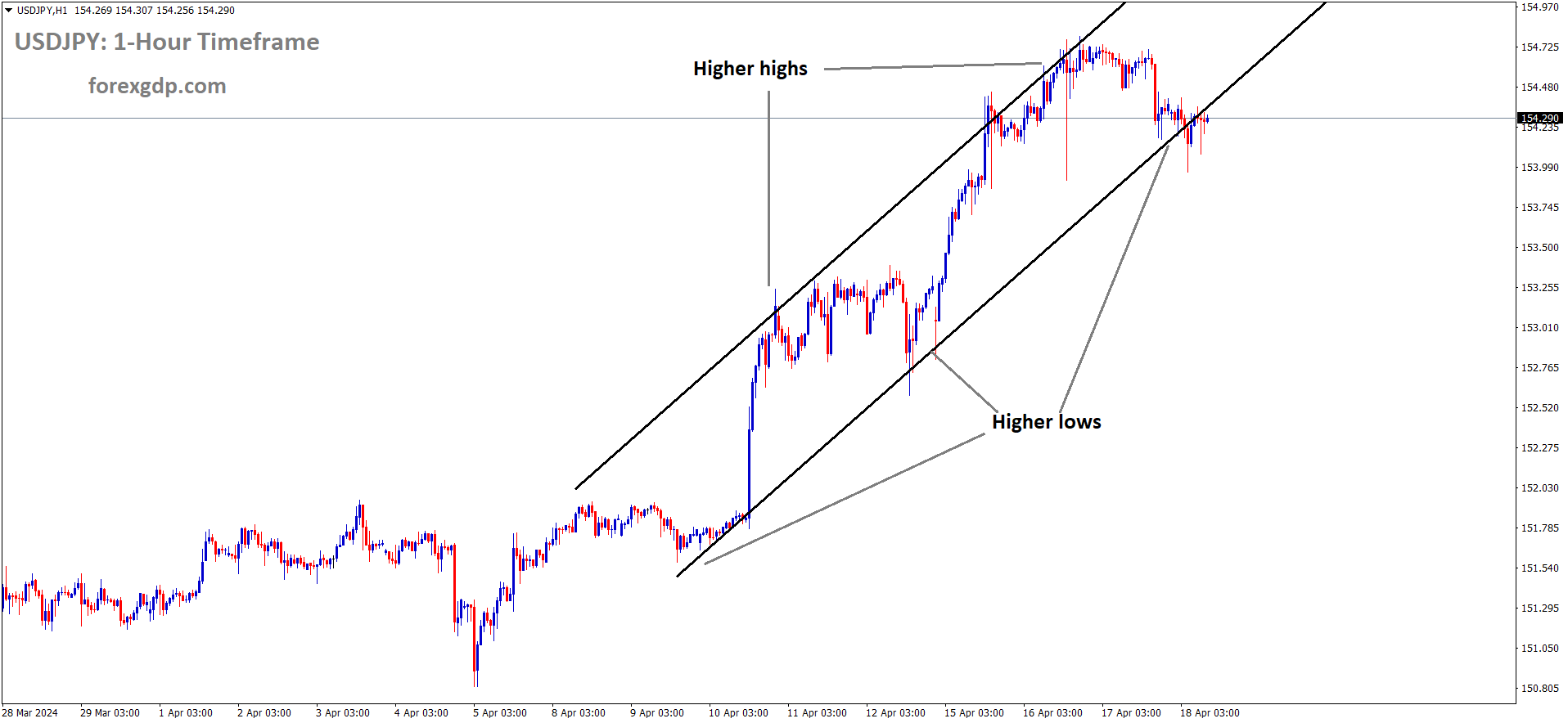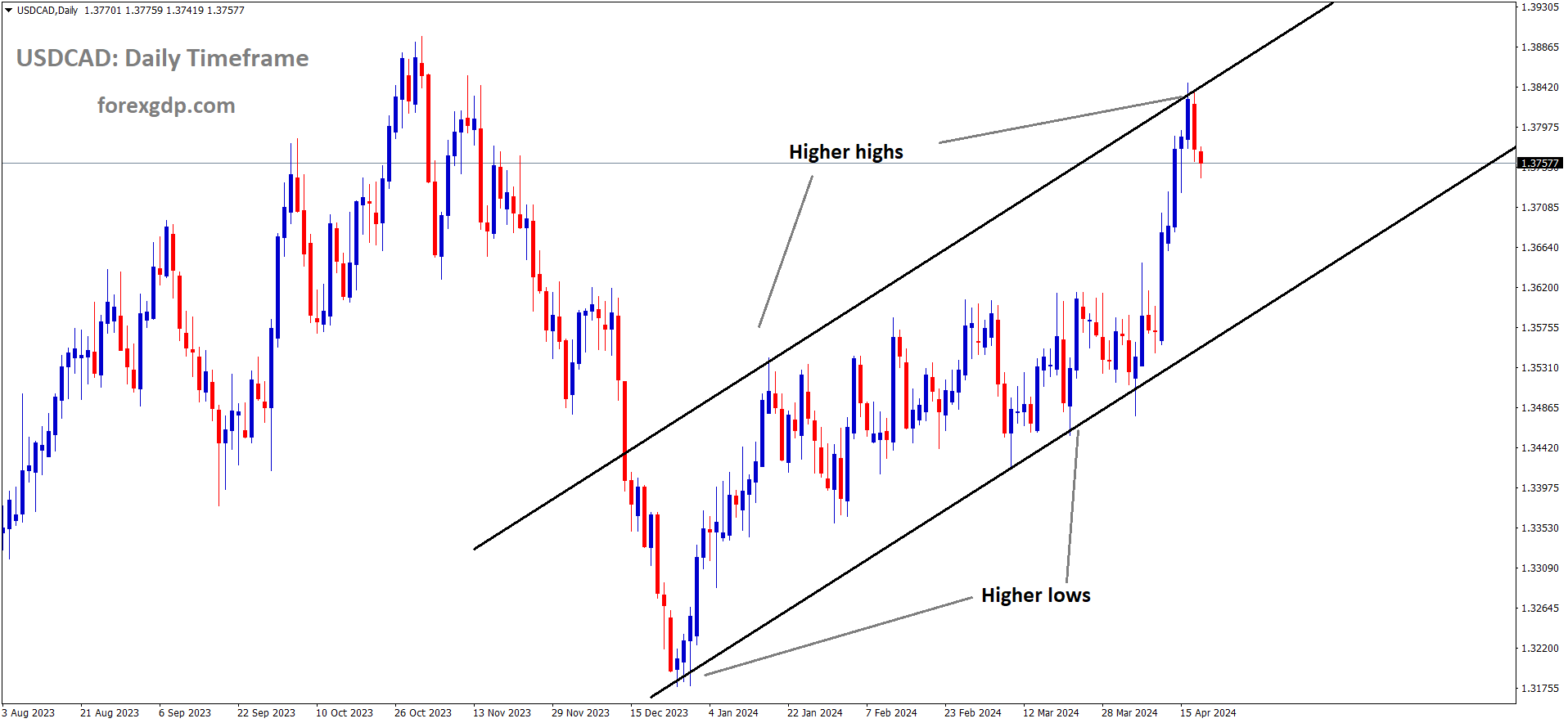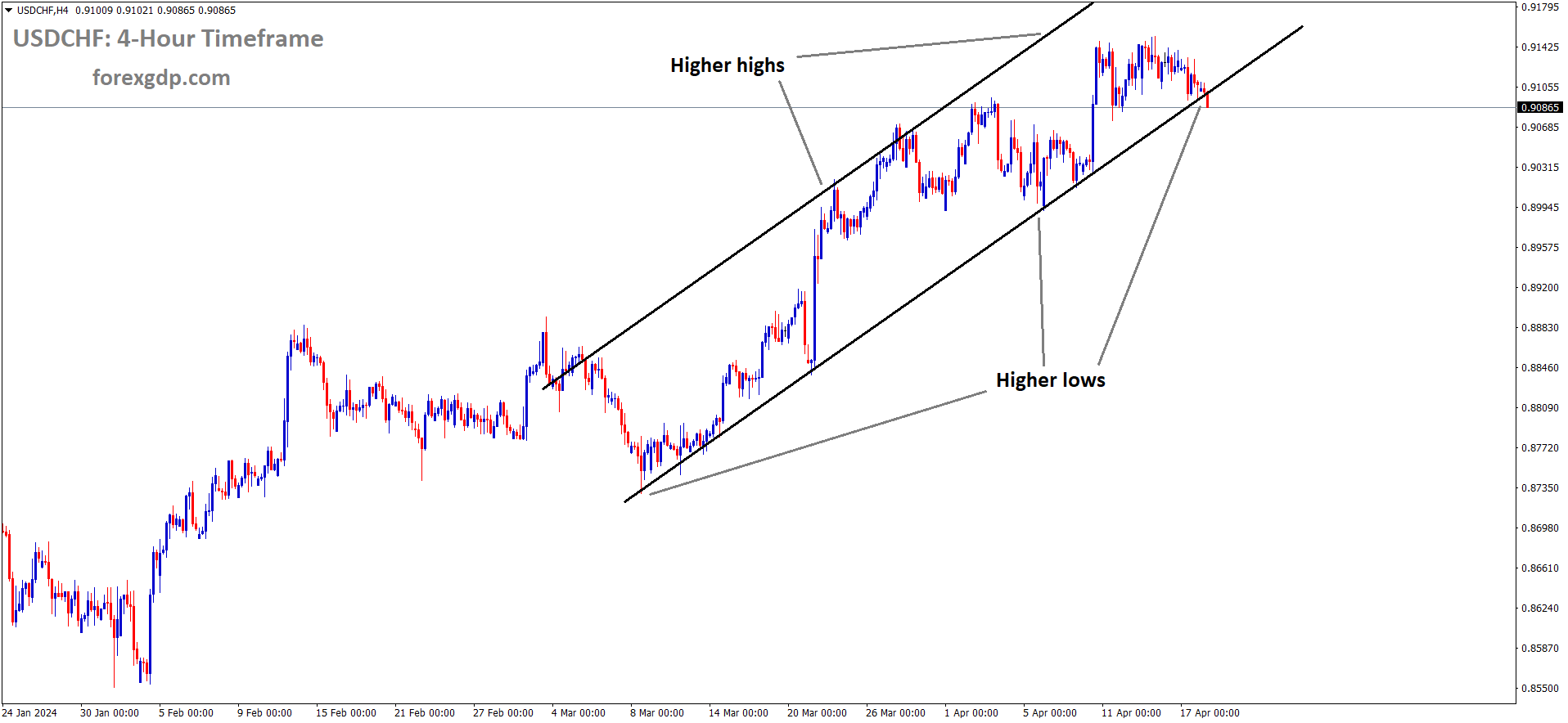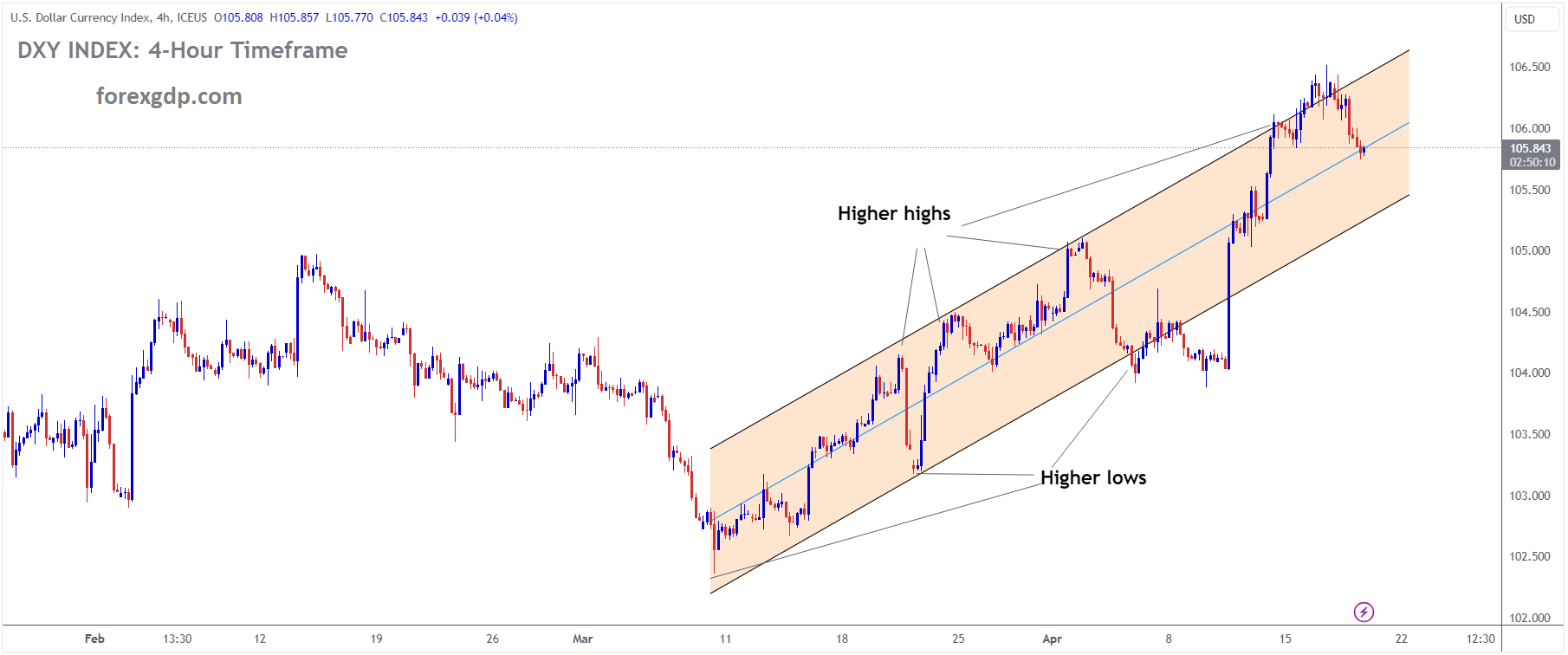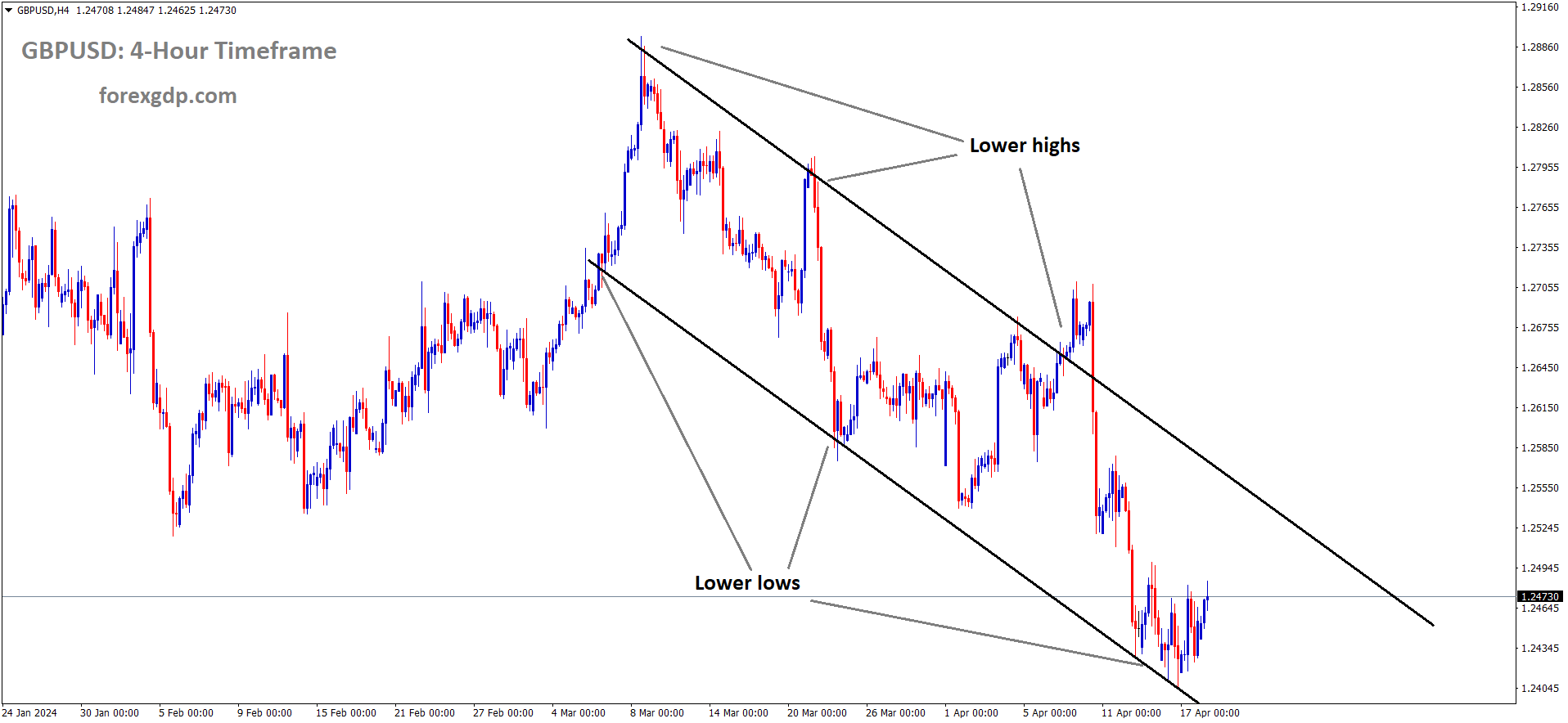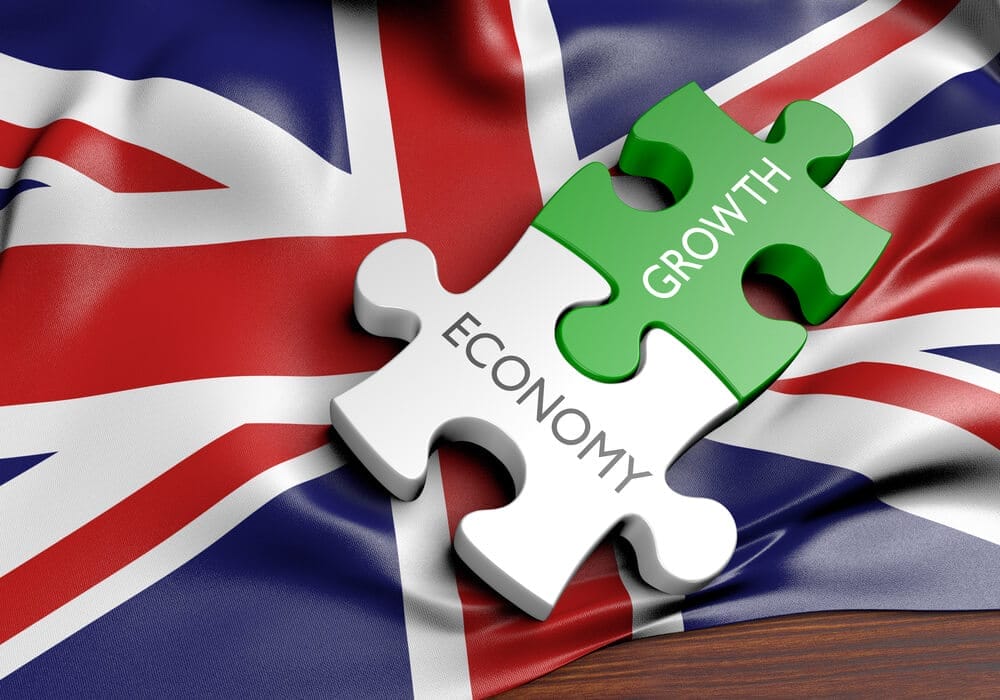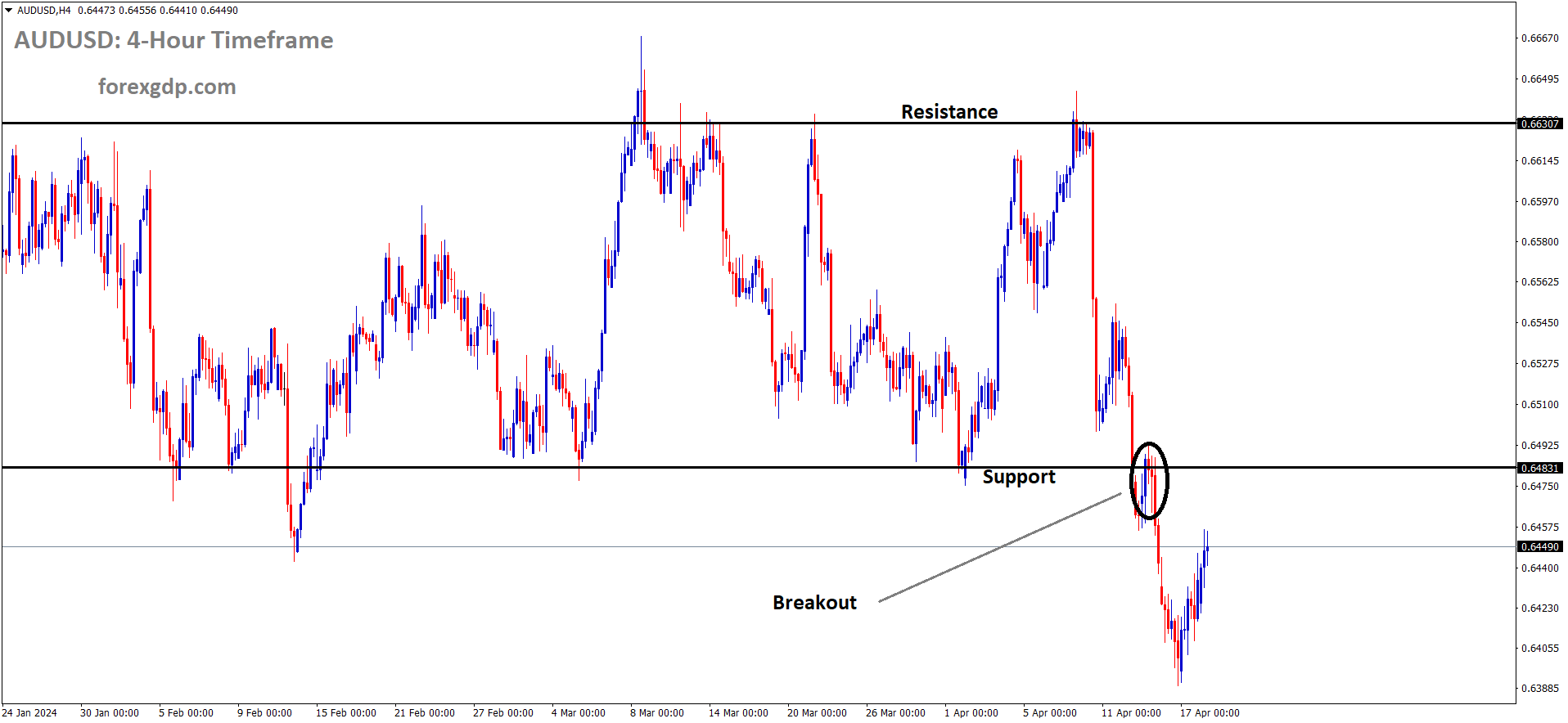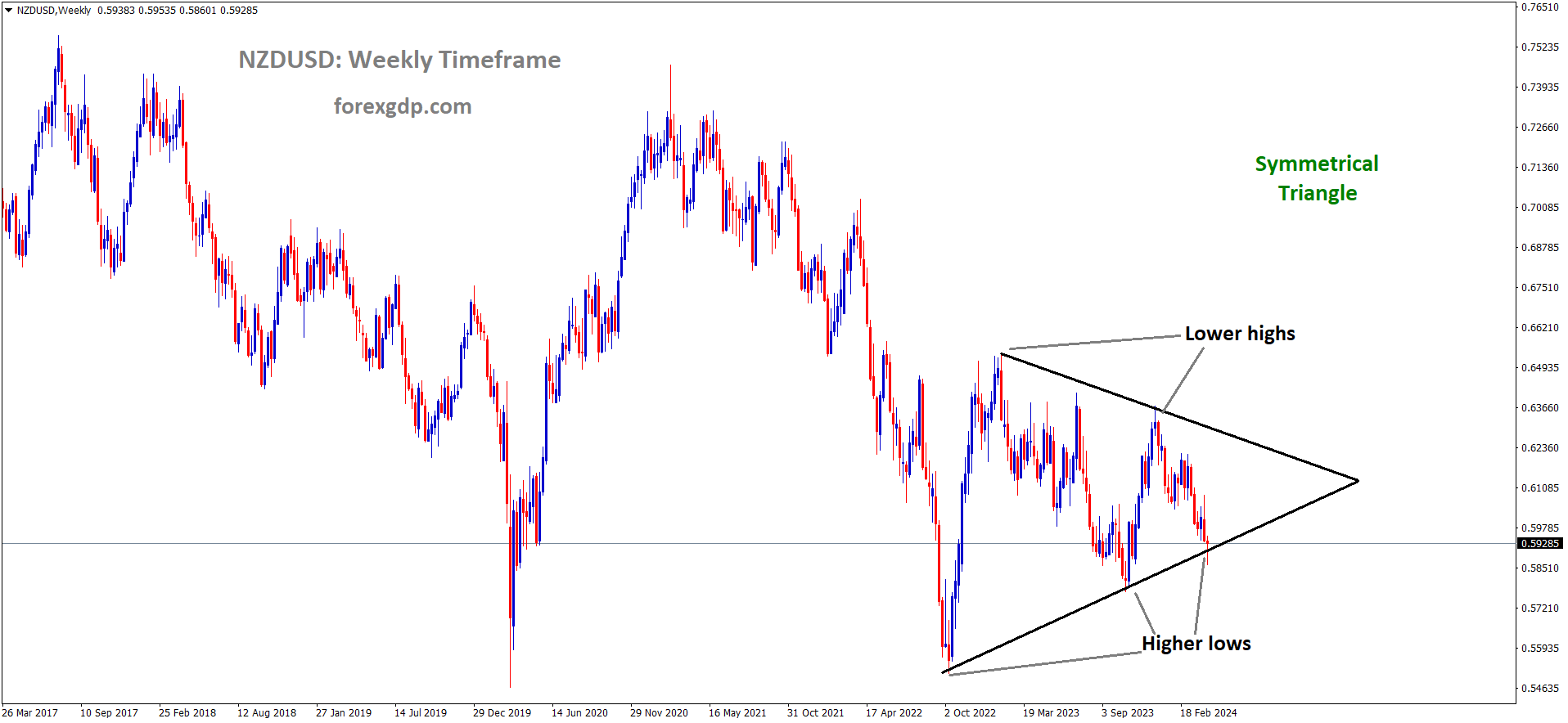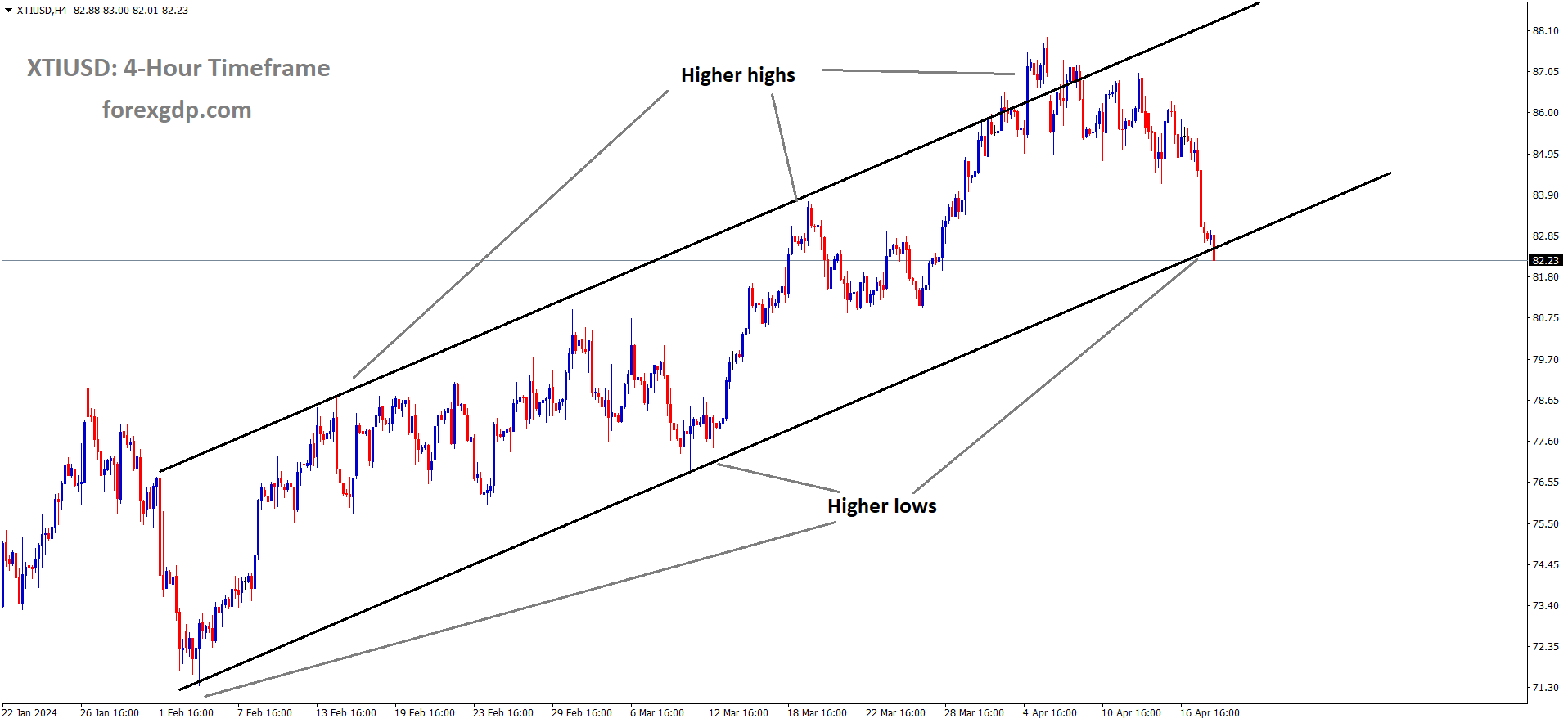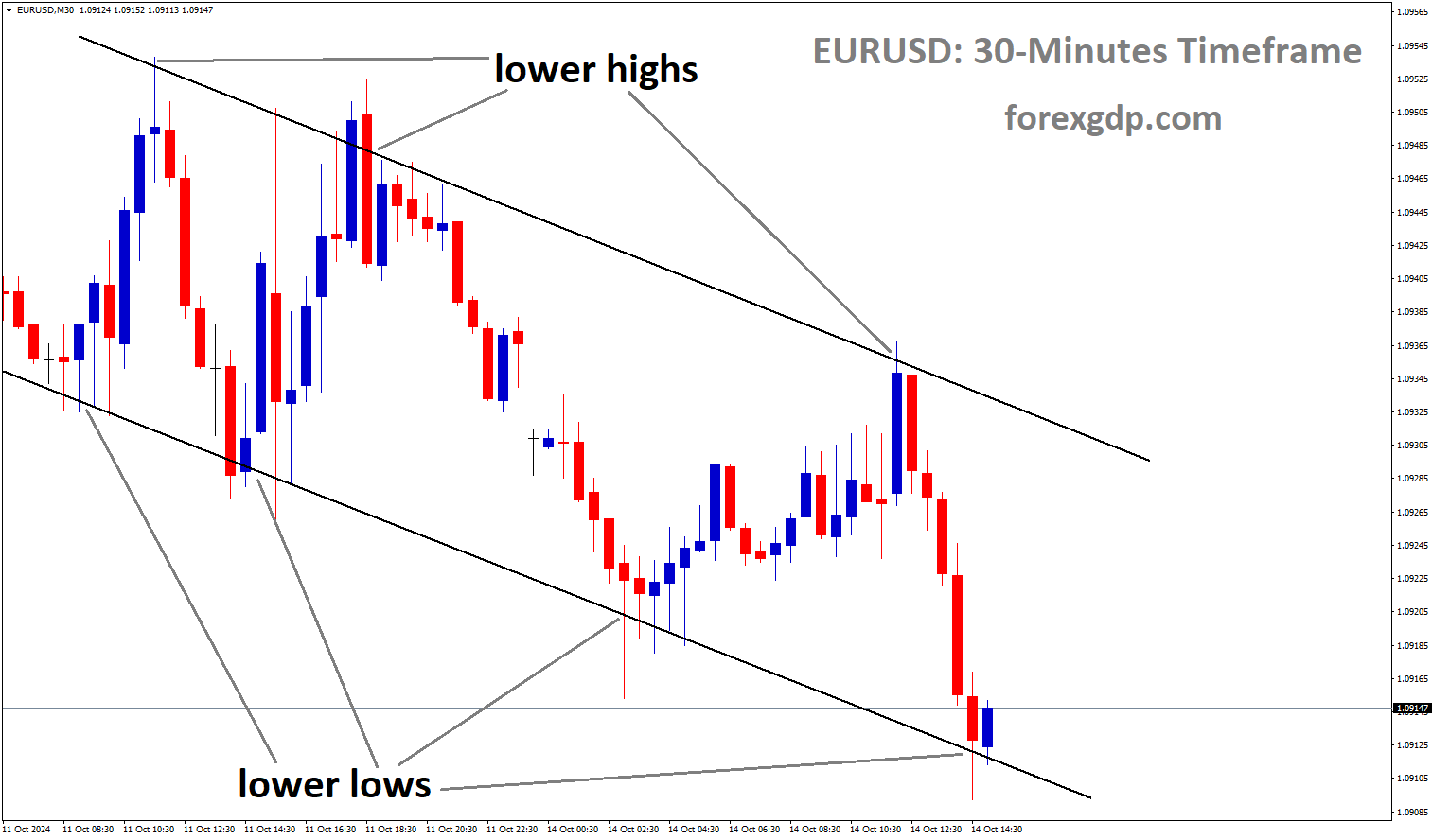XAUUSD Gold price is moving in an Ascending channel and the market has rebounded from the higher low area of the channel
XAUUSD – Gold Price Outlook: XAU/USD Rebounds Amid Market Caution, Targeting $2,400
The Gold prices are moving higher after the Jordan Foreign minister said Israel retailiation on Iran will created the big war in the world. Israel announced on Wednesday to target Hezebollah areas of eastern Lebanon, continuous war between Hezebollah and Israel will create a major risk for Oil supplies.
The precious metal is gaining ground as traders exercise caution amidst escalating geopolitical tensions in the Middle East.
Reports from Reuters highlight statements made by Jordan’s Foreign Minister Ayman Safadi, who warned of the significant risk of a devastating war if Israel retaliates against Iranian strikes. Israel’s Air Force also announced targeting Hezbollah infrastructure in Lebanon, raising concerns about further escalation in the region.
Prime Minister Benjamin Netanyahu emphasized Israel’s determination to defend itself, despite calls for restraint from Western countries in response to attacks from Iran.
Meanwhile, the US Dollar Index (DXY) is weakening, influenced by subdued US Treasury yields. This correction in the US Dollar makes Gold relatively less expensive for investors using other currencies, supporting its demand.
Federal Reserve Bank of Cleveland President Loretta Mester acknowledged on Wednesday that inflation has exceeded expectations. However, she noted that the Fed requires further assurance before confirming the sustainability of 2% inflation.
Fed Chair Jerome Powell’s comments on Tuesday suggested limited progress in inflation this year, signaling a potentially hawkish stance on future monetary decisions. Higher interest rates could reduce demand for non-yielding assets like Gold.
EURUSD – ECB’s de Guindos suggests easing monetary policy if inflation criteria are fulfilled
The ECB Vice President Luis De Guindos said inflation will be met this year I hopes and rate cuts will be there if our goal of inflation target will be achieved. Sustain downtrend of inflation gives hopes to reach our target of 2%. We scale back our monetary policy in the restriction mode to easing mode once 2% target of inflation in the market.
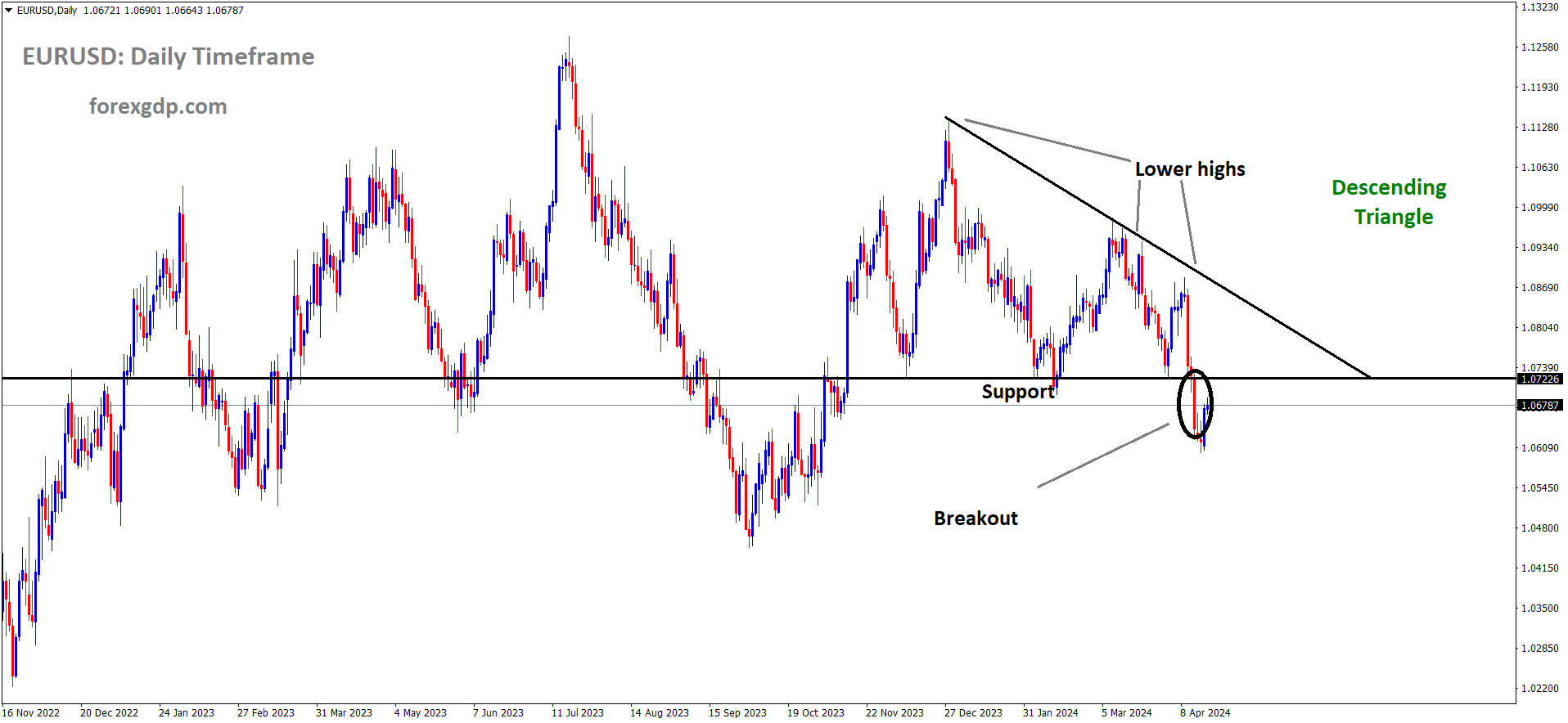
European Central Bank (ECB) Vice President Luis de Guindos stated on Thursday, as reported by Reuters, that if the ECB’s updated evaluation of the inflation outlook, the underlying dynamics of inflation, and the efficacy of monetary policy transmission were to bolster confidence that inflation is progressively aligning with the target over the long term, it would be appropriate to scale back the current level of monetary policy restraint.
De Guindos highlighted that inflation has declined further this year and is anticipated to continue decreasing in the medium term, albeit at a decelerated rate.
USDJPY – BoJ’s Noguchi Forecasts Gradual Rate Hikes Ahead
The BoJ Board Member Asahi Noghuchi said future rate hikes from BoJ is more slower than expected. Wage pressures has to increase and inflation adjusted wage prices has to seen in the market. Inflation target of 2% will be achieved in the 2 years. Weaker yen prices are beneficial for Japan export companies. US economy is growing faster than Japan economy is also concern for Japan Yen weakness. Another rate hike in this year is more doubtful and inflation has to reach the 2% target in the sustainable manner.
USDJPY is moving in an Ascending channel and the market has reached the higher low area of the channel
Bank of Japan (BoJ) board member Asahi Noguchi provided insights on Thursday regarding the future trajectory of monetary policy and its implications. Noguchi highlighted that the prevailing expectation is for future rate hikes to proceed at a gradual pace, contingent upon economic data.
Furthermore, Noguchi emphasized the importance of considering cost-driven inflation and potential policy adjustments should increased wages lead to higher prices. He noted that it will take a significant amount of time for a positive economic cycle to firmly establish itself, while also indicating an increasing likelihood of achieving the 2% inflation target within approximately two years.
Noguchi also mentioned the impact of a weaker yen on certain large corporations, underscoring the potential consequences of prolonged yen weakness on wages and prices. He stressed the necessity for the BoJ to meticulously assess these factors when formulating monetary policy.
Regarding the possibility of further rate hikes in the current year, Noguchi refrained from providing a definitive stance, emphasizing the need for cautious monitoring of economic developments. He highlighted the unexpected strength in the US economy as a contributing factor to the yen’s depreciation.
Noguchi concluded by stating that the BoJ stands prepared to respond should wage hikes, labor shortages, and increased price pressures intensify, aligning the bank’s actions with evolving economic conditions.
USDCAD – Approaches 1.3750 Amid Optimistic Risk Sentiment and Oil Weakness
The Canadian Dollar moved lower after the BoC Rate cut hopes for the month of June is higher.
Oil prices are flat due to US Oil reserves for April 12 ending is higher than previous week. Canadian CPI Data printed slight higher than expected this week makes no sense in the rebound of Canadian Dollar against counter pairs.
USDCAD is moving in an Ascending channel and the market has fallen from the higher high area of the channel
Meanwhile, the US Dollar Index (DXY) is experiencing a decline, primarily influenced by subdued US Treasury yields. DXY has fallen to near 105.90 as the 2-year and 10-year yields on US Treasury bonds stand at 4.92% and 4.57%, respectively, by the press time. This decrease in the US Dollar’s strength is putting pressure on the USD/CAD pair.
The US Dollar encountered challenges following neutral remarks from Federal Reserve (Fed) officials. Fed Governor Michelle Bowman stated on Wednesday that progress in inflation is slowing, possibly reaching a standstill. Bowman also indicated that current monetary policy is restrictive, and its effectiveness will be assessed over time.
Additionally, Federal Reserve Bank of Cleveland President Loretta Mester acknowledged that inflation has surpassed expectations. She emphasized the need for further confirmation from the Fed before solidifying the sustainability of 2% inflation.
On the other hand, the downward trajectory of crude oil prices may impede the Canadian Dollar’s (CAD) upward momentum, given Canada’s position as the largest oil exporter to the United States (US). The price of West Texas Intermediate (WTI) oil has dipped to nearly $82.30 per barrel at the time of writing. Market concerns persist regarding demand for oil this year, particularly amidst indications suggesting potential avoidance of broader conflict in the Middle East.
The rise of the Canadian Dollar’s value could be short-lived due to the dovish sentiment surrounding the Bank of Canada (BoC), which might offset losses in the USD/CAD pair. There are expectations for a 25 basis points (bps) rate cut from the BoC in June, a sentiment reinforced by mixed Canadian inflation data released on Tuesday.
USDCHF – holds above 0.9100 amidst caution, geopolitical concerns monitored
The Swiss Franc is appreciated against counter pairs due to Middle east tensions growing faster than expected, US national security Advisor Jake Sullivan said we impose more sanctions on Iran, then only Iran did not missile attacks on Israel. The Fact is Israel having fault with miss interpreted attack on Iran on April 01 instead of Hamas target. But the western leaders urged Israel to stop war with Iran inorder to protect the Oil supply problems to the World market.
USDCHF is moving in an Ascending channel and the market has reached the higher low area of the channel
The USD/CHF pair experiences a slight decline to 0.9105 on Wednesday during the early European session. This downtick is supported by the drop in the US Dollar Index (DXY) to 106.20. Furthermore, ongoing geopolitical tensions in the Middle East continue to bolster the Swiss Franc (CHF), traditionally considered a safe-haven currency.
Late Tuesday, National Security Advisor Jake Sullivan announced plans for new sanctions targeting Iran, including sanctions against entities supporting the Islamic Revolutionary Guard Corps and Iran’s Defense Ministry. Sullivan stated that these measures aim to contain and degrade Iran’s military capacity and confront its problematic behaviors. Western leaders have urged Israel to exercise restraint in response to escalating tensions with Iran. Market participants are closely monitoring developments in the Israel-Iran situation, as any escalation could boost safe-haven assets like the CHF and pose challenges for the USD/CHF pair.
Meanwhile, the Greenback receives support from robust US economic data and hawkish comments from the Federal Reserve. Fed Chair Jerome Powell emphasized that inflation has not yet returned to the 2% target and advocated for a continued restrictive monetary policy stance. These statements diminish hopes for significant rate cuts this year and contribute to the USD’s strength against other currencies. According to the CME FedWatch Tool, financial markets have priced in a 67% likelihood of a Fed interest rate cut in September.
USD INDEX – Bowman: Inflation Progress Slows, Possibly Halts
The FED Governor Michelle Bowman said inflation is slower in the market and it will halts soon. Time will tell when we have to loose the monetary policy settings in the market. People spending more on lower pricing goods but they spending in the travelling more due to hot job market.
USD INDEX is moving in an Ascending channel and the market has fallen from the higher high area of the channel
On Wednesday, Federal Reserve (Fed) Governor Michelle Bowman commented on the state of inflation, noting a slowdown and the possibility of it coming to a halt. She also discussed the current stance of monetary policy, highlighting its restrictive nature and the need to assess whether it is adequately so.
Bowman emphasized the following key points:
- Inflation Progress: Bowman observed a deceleration in the progress of inflation, indicating a potential pause in its trajectory.
- Consumer Spending and Job Growth: She noted that the strength of consumer spending is closely linked to ongoing job growth, suggesting a positive correlation between the two factors.
- Monetary Policy: Bowman characterized the current monetary policy stance as restrictive. However, she added that it remains to be seen whether this level of restrictiveness is sufficient.
- Consumer Behavior: Bowman mentioned that consumers are opting for less expensive goods but are still allocating significant expenditure towards travel, particularly for events like eclipse viewing.
These remarks from Bowman provide insights into the Fed’s perspective on inflation dynamics and the overall economic environment.
GBPUSD – stalls under 1.2470, awaits US data
The GBPUSD moving lower after the UK CPI Data for the month of March came at 3.2% it is 12 month low and down from 3.4% in the previous month. BoE is expected to lower the rates in August or September according to the LSEG Economists view.
GBPUSD is moving in the Descending channel and the market has rebounded from the lower low area of the channel
The GBP/USD pair is trading slightly lower around the 1.2450 level in the early Asian trading hours on Thursday. The Pound Sterling (GBP) faces pressure against the US Dollar (USD) following softer UK inflation data, fueling expectations of potential interest rate cuts by the Bank of England (BoE) in the coming months. Market participants are keenly awaiting key economic data releases from the United States, including the weekly Initial Jobless Claims, the Philly Fed Manufacturing Index, the CB Leading Index, and Existing Home Sales, all scheduled for Thursday.
The BoE has hinted at the possibility of an interest rate cut, citing recent data indicating a slowdown in the pace of inflation in the UK economy. According to the Office for National Statistics (ONS), the UK Consumer Price Index (CPI) inflation fell to 3.2% in the 12 months to March, marking the lowest level in two-and-a-half years. This figure represents a decline from the previous reading of 3.4%. Investors are anticipating the first rate cut to occur in either August or September, as indicated by data from the London Stock Exchange Group (LSEG).
Meanwhile, positive Retail Sales data from February in the United States earlier this week suggested a strong economy, sparking speculation that the Federal Reserve (Fed) might postpone its easing cycle. Fed Chair Jerome Powell stated that he would adopt a more patient approach to rate cuts following unexpectedly higher inflation readings. Powell emphasized that the Fed would require additional time to ascertain whether inflation is progressing towards the target of 2% before considering adjustments to borrowing costs. These remarks provide some support to the US Dollar, constraining the upside potential of the GBP/USD pair.
AUDUSD – Australia’s March Unemployment Rate: 3.8% vs. Expected 3.9%
The Australian Unemployment rate rose to 3.8% in march month from 3.7% printed in the February month and 3.9% is expected. Employment change came at -6.6K in March month versus 7.2K expected and 116.5K printed in the last month. The economists said Still Job Market is higher than pre-pandemic levels, just 0.40% only decreased. The Australian Dollar moved higher against counter pairs after the data printed.
AUDUSD has broken the Box pattern in downside
In March, Australia’s unemployment rate climbed to 3.8%, slightly surpassing the anticipated 3.9% and marking a rise from the previous 3.7%, as revealed by official data released by the Australian Bureau of Statistics (ABS) on Thursday.
The Australian Employment Change saw a notable shift, dropping to -6.6K in March from 116.5K in February, differing significantly from the expected 7.2K.
During the same period, Australia’s participation rate decreased to 66.6% from February’s 66.7%. However, Full-Time Employment surged by 27.9K, reaching 9,853,800 individuals, a notable increase from the previous reading of 79.4K. In contrast, Part-Time Employment declined by 6.6K to 4,406,100 individuals in March, down from the previous 117.6K and falling short of the market consensus of a 7.2K rise.
Bjorn Jarvis, the head of labour statistics at ABS, highlighted key trends, stating, “With employment decreasing by approximately 7,000 individuals and the number of unemployed increasing by 21,000, the unemployment rate escalated to 3.8%.”
He further commented, “The labor market retained its relative tightness in March, with both the employment-to-population ratio and participation rate hovering close to their record highs in November 2023. Despite a 0.4 percentage point decline since then, they remain substantially higher than pre-pandemic levels.”
NZDUSD – Surges to 0.5900 on Delayed RBNZ Rate Cut Expectations
The RBNZ will do rate cuts in the November month instead of October month due to rising inflation rate of 0.60% QoQ in the First quarter of 2024 from 0.50% printed in the last quarter of 2023.Annualised inflation rate came at 4.0% from 4.7% printed in the last month.NZ Dollar moved higher after the inflation rise in the Quarterly basis.
NZDUSD is moving in the Symmetrical triangle pattern and the market has reached the higher low area of the pattern
The New Zealand dollar (NZD/USD) has surged to 0.5900 as investors reassess their expectations regarding potential rate cuts by the Reserve Bank of New Zealand (RBNZ).
Traders have recalibrated their outlook, now projecting the RBNZ to commence lowering borrowing rates starting from the November meeting, instead of the previously anticipated October meeting. This shift in market sentiment regarding the timing of the RBNZ’s action stems largely from the release of New Zealand’s Q1 Consumer Price Index (CPI) data during Wednesday’s early Asian session.
According to Stats NZ, the country’s inflation rose by the expected 0.6%, surpassing the 0.5% growth recorded in the previous quarter of 2023. However, the annual inflation rate decelerated to 4.0% from the prior reading of 4.7%. Presently, the RBNZ has kept its Official Cash Rate (OCR) steady at 5.5%.
In addition to the CPI data, a notable improvement in market sentiment has contributed to the strengthened demand for the New Zealand Dollar. S&P 500 futures have demonstrated significant gains during the European session, while 10-year US Treasury yields have experienced a slight decline to 4.64%. Meanwhile, the rally in the US Dollar Index (DXY) has appeared to lose momentum around 106.40, as investors have factored in the likelihood of the Federal Reserve (Fed) maintaining higher interest rates for a prolonged period.
Fed Chair Jerome Powell’s recent remarks have also influenced market dynamics. Powell indicated, “The recent data have clearly not given us greater confidence, and instead indicate that it’s likely to take longer than expected to achieve that confidence,” as reported by Reuters. These comments were in response to the hot consumer price inflation data for March.
Presently, financial markets are anticipating that the Fed will commence interest rate reductions starting from the September meeting.
CRUDE OIL – WTI crude falls below $82.50 due to inventory buildup
The Crudeoil prices are lower after the US Energy Agency said Stock inventory rose to 2.735 million Barrels on April 12 ending from 5.845 barrels last week. Expected inventory Barrels is 1.6 million barrels. Rising tensions between Israel and Iran makes waiting for Oil prices to slump or Jump Scenario in the World markets.
XTIUSD Oil price is moving in an Ascending channel and the market has reached the higher low area of the channel
Western Texas Intermediate (WTI), the US benchmark for crude oil, is currently priced around $82.25 per barrel on Thursday. The decline in oil prices today is attributed to two main factors: an increase in US crude inventories and the expectation of delayed rate cuts from the Federal Reserve (Fed). However, the situation in the Middle East, marked by escalating geopolitical tensions, may prevent oil prices from dropping further.
US crude oil inventories have risen for the fourth consecutive week. Data released by the Energy Information Administration (EIA) on Wednesday showed that crude oil stockpiles in the US increased by 2.735 million barrels for the week ending April 12. This follows a build of 5.841 million barrels in the previous week, exceeding the market consensus estimate of a 1.6 million barrel increase.
Moreover, remarks from several Fed officials, expressing a more hawkish stance, have bolstered the US Dollar (USD) and put downward pressure on WTI prices. Late on Wednesday, Fed Cleveland President Loretta Mester highlighted that inflation is higher than anticipated, indicating a cautious approach from the central bank. Fed Chair Jerome Powell echoed similar sentiments, suggesting a longer wait before considering rate cuts, particularly in light of unexpected inflation data.
Although the risk of escalation in the Middle East seems subdued at present, oil traders remain vigilant, especially regarding developments in Israel and Iran’s responses. US President Joe Biden’s call for restraint and Iran’s statement indicating a reluctance to continue strikes have somewhat eased tensions. However, any further conflict in the region could disrupt oil supplies and lead to an increase in WTI prices.
Don’t trade all the time, trade forex only at the confirmed trade setups
Get more confirmed trade signals at premium or supreme – Click here to get more signals , 2200%, 800% growth in Real Live USD trading account of our users – click here to see , or If you want to get FREE Trial signals, You can Join FREE Signals Now!

